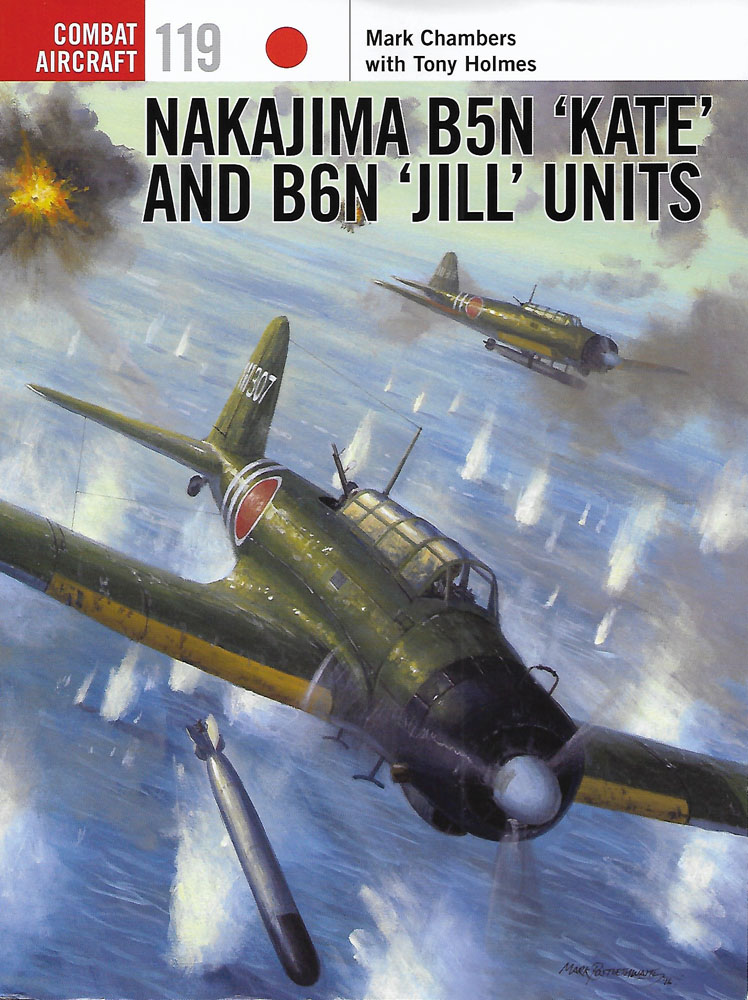Nakajima B5N "Kate" and B6N "Jill" Units
The Imperial Japanese Navy entered the Pacific War with the most advanced ship-based attack bomber in the world, flown by the most experienced aircrews of any service. First flown in 1937, and introduced into squadron service during the Sino-Japanese conflict in 1938, the Nakajima B5N was faster, flew farther and carried a heavier payload than either of its British or American contemporaries (principally, the Fairey Swordfish and Douglas TBD Devastator, respectively). When used as either a level bomber against stationary targets, or as a torpedo bomber against ships, the “Kate” (as it came to be known to the Allies) would wreak havoc against Japan’s enemies for the first year of the war.
Design specifications for the B5N’s replacement were issued even before the advent of hostilities against the western allies. Finally reaching frontline service in mid-1943, the Nakajima B6N Tenzan (Heavenly Mountain to its Japanese crews, and “Jill” to the Allies) was a considerable improvement in speed and range over the B5N, while being of similar size (due to carrier elevator size restrictions) and carrying the same 800 Kg bomb load or torpedo. Unfortunately for the Japanese, by that time the U.S. Navy had obtained nearly complete air superiority anywhere its carriers sailed, and both the Jills and remaining Kates suffered accordingly. Both ended up being expended in futile Kamikaze attacks in the final months of the war.
Authors Mark Chambers and Tony Holmes have extensively researched Japanese files to present a concise history of the IJN’s carrier attack operations. Much of the information on early wartime operations - Pearl Harbor, Indian Ocean, Coral Sea and Midway - are drawn directly from the memoirs of Commander Mitsuo Fuchida, who planned and led many of them. Both his observations and critiques add color and depth to the descriptions of actions involving the Kate squadrons up through the reduction of Rabaul. The desperate air battles in and around the Solomons, including Eastern Solomons and Santa Cruz, are described in detail, as are the actions of B6N Tenzans in the Central Pacific and from Formosa, as well as from carriers during the Philippine Sea and Leyte Gulf battles. An added bonus, to the best extent possible where records are available, is the systematic breakdown throughout the text of the numbers of B5N and B6N aircraft assigned to individual carriers or air groups for each of the Pacific War’s principal carrier clashes.
Although some of the photos in this volume have been previously published, the majority are from Japanese sources, and are new or have rarely been seen by western readers. Jim Laurier’s 30 profiles, as always, are superb.
This is an edition of Osprey’s well regarded Combat Aircraft Series that enthusiasts of Japanese naval aviation have long awaited. They won’t be disappointed. Thanks to IPMS and Osprey Publishing for the opportunity to review this outstanding publication.






Comments
Add new comment
This site is protected by reCAPTCHA and the Google Privacy Policy and Terms of Service apply.
Similar Reviews